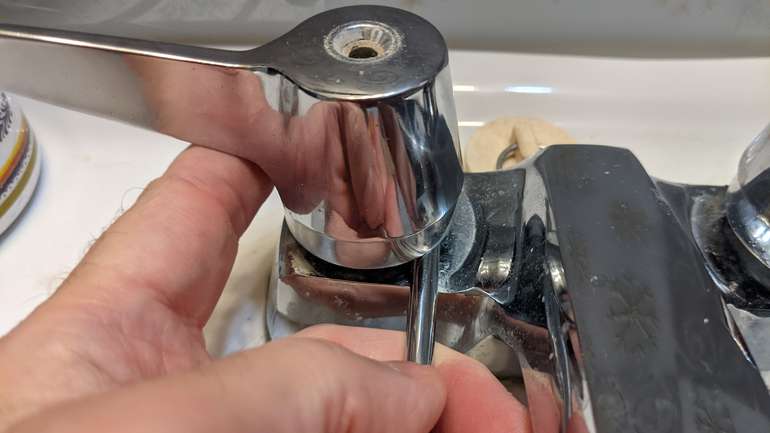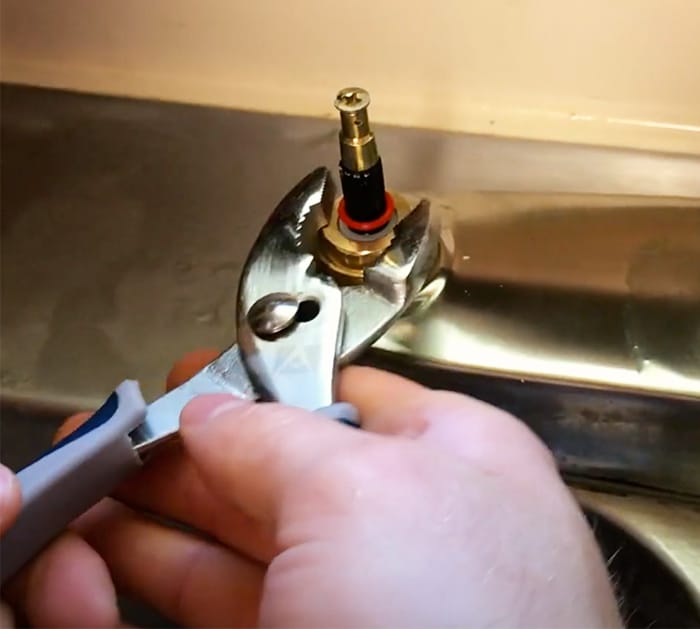Just how do you feel when it comes to Water Dripping from Faucet: Why and How to Fix?

Dripping faucets may appear like a minor inconvenience, but their effect surpasses simply the annoyance of the sound. From drainage to sustaining unneeded monetary prices and wellness risks, disregarding a trickling faucet can bring about various effects. In this write-up, we'll explore why it's critical to resolve this common household concern quickly and properly.
Wastefulness of Water
Ecological Impact
Dripping taps add substantially to water waste. According to the Epa (EPA), a solitary tap trickling at one drip per secondly can lose more than 3,000 gallons of water per year. This not just pressures water resources but additionally impacts ecological communities and wild animals based on them.
Step-by-Step Overview to Taking Care Of a Dripping Faucet
Devices Required
Prior to trying to repair a trickling tap, gather the needed devices, including an adjustable wrench, screwdrivers, replacement parts (such as washers or cartridges), and plumber's tape.
Typical Faucet Issues and Their Solutions
Determine the kind of tap and the particular concern causing the drip. Typical issues consist of damaged washers, corroded shutoff seats, or damaged O-rings. Refer to producer directions or online tutorials for step-by-step assistance on repair services.
Financial Expenses
Raised Water Costs
Beyond the environmental impact, trickling taps can pump up water costs substantially. The gathered waste with time translates right into greater energy expenses, which might have been prevented with timely fixings.
Possible Residential Or Commercial Property Damage
In addition, long term dripping can bring about damage to components and surfaces bordering the faucet. Water buildup can create staining, deterioration, and even architectural issues if left neglected, causing added fixing prices.
Wellness Worries
Mold and Mildew Growth
The consistent existence of wetness from a trickling tap produces a suitable setting for mold and mildew and mold development. These fungis not only jeopardize indoor air top quality however also posture health and wellness dangers, particularly for people with breathing conditions or allergic reactions.
Waterborne Diseases
Stationary water in trickling taps can end up being a breeding ground for microorganisms and other virus, increasing the threat of waterborne diseases. Pollutants such as Legionella bacteria flourish in stationary water, possibly leading to severe illnesses when consumed or inhaled.
DIY vs. Expert Fixing
Advantages and disadvantages of DIY Repair Service
While some might try to take care of a leaking faucet themselves, DIY repairs come with their own set of challenges. Without correct understanding and tools, DIY attempts can worsen the concern or bring about incomplete repair services, extending the issue.
Benefits of Working With a Professional Plumber
Employing an expert plumber guarantees that the underlying source of the trickling faucet is dealt with properly. Plumbing technicians have the proficiency and tools to detect and repair tap concerns efficiently, conserving time and lessening the danger of further damages.
Ecological Responsibility
Private Payment to Conservation
Taking obligation for fixing dripping taps straightens with wider initiatives towards water preservation and ecological sustainability. Every individual's actions collectively make a significant influence on protecting valuable sources.
Sustainable Living Practices
By prioritizing timely repair work and taking on water-saving habits, people contribute to sustainable living techniques that profit both present and future generations.
Preventive Measures
Normal Maintenance Tips
To avoid dripping taps, do routine upkeep such as cleansing aerators, inspecting for leaks, and replacing damaged parts quickly. Additionally, consider installing water-saving tools or updating to a lot more efficient components.
Value of Prompt Repair Works
Attending to trickling faucets as soon as they're noticed prevents more water waste and possible damages, ultimately saving both water and money over time.
Effect On Property Value
Perception of Well-Maintained Building
Maintaining a residential property in good condition, including addressing upkeep issues like dripping faucets, boosts its regarded worth and charm amongst prospective purchasers or occupants.
Influence on Resale Worth
Properties with well-maintained plumbing fixtures, consisting of taps, command greater resale values in the realty market. Attending to dripping taps can contribute to a favorable perception during building evaluations and settlements.
Final thought
Dealing with a trickling faucet exceeds simple ease; it's an essential action towards conserving water, minimizing monetary costs, and safeguarding health and wellness and building. Whether with do it yourself repairs or specialist support, doing something about it to repair trickling taps is a little yet impactful means to promote liable stewardship of sources and add to a healthier, extra sustainable future.
How to Fix a Leaky Faucet: Step-by-Step Repair Guide
A leaky faucet may seem like a simple annoyance, but if it's not fixed promptly, that leak could cost hundreds to potentially thousands. From water damage to mold, mildew, and high water bills, even a tiny leak can be catastrophic if left unattended. Damage like this can even affect the overall value of your home, so it's important to take the right approach for leaky faucet repair. You may need the help of a plumber in some cases, but we've got a few tips you can try on how to fix a leaky faucet before calling the pros.
Four Faucet Types
When you're learning how to fix a leaky faucet, the first step is knowing what kind of faucet you're working with! There are four common types.
Cartridge Faucets
Cartridge faucets come in one- or two-handled varieties. In one-handled cartridge faucets, hot and cold water combines in a single cartridge. In the two-handled versions, hot and cold water are controlled separately and mixed in the faucet.
Ball Faucets
Ball faucets have a single lever you push up and down to adjust the pressure and rotate to change the temperature. A slotted metal ball controls the amount of water allowed into the spout.
Compression Washer Faucets
They're the oldest type of faucet, but they're still used in many homes — especially older ones. Compression faucets have two separate handles that, when turned, raise or lower the washer that seals a water valve. This valve stops water from flowing through the faucet when it is turned off.
Disc Faucets
Disc faucets rarely need to be repaired due to their maintenance-free design. The water flow is controlled by two discs — the upper one raises and lowers against a fixed lower disc, creating a watertight seal. If your disc faucet starts leaking, you may need to replace the seals or clean residue buildup from the inlets.
Fixing a Leaky Faucet
Step 1: Turn Off the Water
Whether you're learning how to fix a leaky bathtub faucet or how to fix a leaky kitchen faucet, always turn off the water supply to your working area when you're fixing a leak. The last thing you want is a flood added to your list of things to fix.
Look for the shutoff valves below your sink or around the tub and turn them clockwise to stop the water flow. If your faucet doesn't have shutoff valves, you may need to turn off the water for the whole house. Check to make sure it's off by turning the faucet on. If nothing comes out, you're ready to start the repair.
Step 2: Take Apart the Faucet
How you disassemble your faucet depends on the type of fixture you have. You can use a flathead screwdriver to remove the caps on top of the handle or handles for cartridge and compression faucets. Inside, you should see handle screws. Unscrew these with a screwdriver to remove the handle.
Disc- and ball-style faucets will typically have an inlet screw near the handle, and removing that will reveal the interior of the faucet.
Detach the Valve Stem
For cartridge- and compression-style faucets, you'll see the inner valve stem or cartridge once you remove the faucet handles. If you have a compression faucet, unscrew the brass valve stem. If you have a cartridge faucet, pull out the cartridge. If your cartridge has been in place for a while, it may require some tools or extra force to remove it due to mineral deposits.
Examine and Replace Parts
Once you've removed the parts, check them out to confirm what needs to be replaced. You may see corroded rubber washers, O-rings, stems, or cartridges. On a ball-style faucet, check the seats and springs for damage.
If you need to repair a leaky disc faucet, check the inlet and seals on the lower disc.
Once you determine what parts must be replaced, visit your local hardware store. Bring the damaged parts with you to ensure you can purchase the correct components to replace them.
Clean Valves and Faucet Cavity
If you've removed a stem or cartridge, you may notice mineral buildup in the faucet's threads. Use white vinegar to clean the valve seat by soaking it for a few minutes, then scrub it away with a soft toothbrush and rinse with warm water. You can also clean the interior of the faucet in the same way.
Reassemble the Faucet
Once your faucet is cleaned and the required parts have been replaced, it's time to reassemble it. Put the pieces back together and slowly turn the water supply back on. Doing this slowly is crucial because too much initial water pressure can damage the new hardware you've just installed.
https://homewarranty.firstam.com/blog/how-to-fix-leaky-faucet

We had been guided to that report about How to Fix a Dripping or Leaky Faucet from an associate on a different website. Are you aware of anybody else who is intrigued by Why Are My Faucets Dripping (And Can I Fix It Myself)?? Why not share it. We truly appreciate your readership.